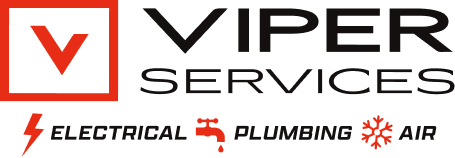Owning a home is one of the most rewarding experiences, but it comes with a lot of responsibilities. From mowing the lawn to keeping up with regular upkeep, there’s plenty to keep up with. One of the most important – yet often overlooked – aspects of homeownership is maintaining and understanding your home’s electrical system.
Having a basic understanding of the components that make up a home electrical system enables homeowners to take better care of their property. Most importantly, a fundamental understanding of the system will help homeowners avoid potential hazards. The United States Consumer Product Safety Commission reported a staggering 31,000 annual home electrical fires. Moreover, there have been over 180 incidents involving preventable electrocution or electricity-related mishaps. Understanding this critical information is paramount to ensuring your safety.
In this article, we’ll cover the basics of home electrical systems and explain how they work in an easy-to-understand way. By the end, you’ll have a better understanding of your home’s wiring system, allowing you to take proactive measures to prevent any issues arising with it.
Components of a Home Electrical System
Here’s an overview of the most common components of a home electrical system:
Main Service Panel
The main service panel, also known as the breaker box or fuse box, is the heart of a home’s electrical system. This large metal box controls and distributes power throughout the home. You’ll find the main switch in the center of the panel, which can be used to turn off power to the entire system in case of an emergency. You’ll also find individual switches (circuit breakers) that control the power going to each circuit.
You can often find the main service panel in the garage, basement, or utility room.
Sub-Panels
If your home has more complex electrical needs, you may have additional “sub-panels” to distribute power more efficiently. For instance, homes with a pool or hot tub may require a sub-panel to help regulate the power going to those areas.
Circuit Breakers
As mentioned earlier, your main service panel will contain some switches that control different circuits throughout the home. These switches are known as circuit breakers, and they help to protect your home from overloads or power surges.
You can manually control circuit breakers to turn off power when needed, such as during maintenance or repairs. However, these devices are also designed to trip (deactivate) when a potential hazard is detected. This, in turn, protects your home from wire damage and fire.
Note: Homes did not have service panels/circuit breakers before the 1960s – instead, they had fuse boxes. These devices are potentially dangerous and need to be replaced, as they no longer meet modern safety standards. So, contacting a professional electrician is advisable if your home has an older fuse box. They will be able to install a new service panel to keep you and your family safe.
Electrical Cables
The most common electrical cable used for modern home appliances is the Romex cable. This is a non-metallic (NM) cable with plastic sheathing covering several wires. The specifics of the cables vary depending on the voltage, amperage, and number of wires.
For example, the Romex cable that is often used in lighting circuits will carry the name NM 14-2 and have white sheathing. This cable is designed to carry up to 14-gauge wire at 15 amps of power. No matter the cable type, it is always important to match the correct size wire and amperage for your appliances.
If you have questions regarding the cable you need for a specific project, it is best to consult an experienced electrician. This will ensure that your appliances and circuits are correctly wired, allowing them to work safely with no risk of damage or fire.
Outlets and Switches
The outlets and switches in your home are designed to connect electrical devices safely. Outlets, or receptacles, provide a safe place to plug in appliances such as TVs, computers, and lamps. Switches control the flow of power to these outlets so that you can turn lights on and off without having to unplug them.
It is important to ensure that the outlets and switches in your home can handle the current coming from your appliances. If there is too much current flowing through a particular outlet, it could result in overheating and cause damage or even start a fire.
If you’re not sure if your outlets and switches are up to date with current safety standards, contact an electrician to inspect them. They will be able to assess the condition of your outlets and switches and replace any that are not up to code.
Conduit
A conduit is a metal tubing that is commonly used to protect electrical wiring. It is most often used in outdoor wiring projects. The metal conduit provides protection and durability against the elements while also allowing for easy maintenance should any repairs need to be made.
Types of Electrical Wiring for a Home
Now that you know the basics of electrical home systems, it’s time to take a closer look at the different types of wiring used in a home:
Non-Metallic Sheathed Cable (NM)
As previously mentioned, NM (Romex) cable is the most commonly used wiring in residential homes. It consists of multiple insulated cables surrounded by a flexible plastic jacket. This wiring is designed to transmit power from one point to another while also being able to bend/flex around obstacles in the home.
Armored Cable (AC)
Armored cable is similar to NM cable, but it has a metal covering over the insulation. This adds an extra layer of protection and makes AC wiring ideal for outdoor applications, such as outside lighting or running power to a shed.
Underground Feeder Cable
As the name suggests, underground feeder cables are designed specifically for use in underground service. This type of wiring is encased in a protective coating and is designed to withstand the elements. The cables are typically buried in trenches to protect them from animals, water damage, and vandalism.
Low-Voltage Wire
Low-voltage wire is a type of wiring designed to run low-voltage electrical systems such as doorbells, security cameras, landscape lighting, and other devices. This type of wiring typically does not require conduit and can be easily installed with minimal tools.
THHN/THWN WIRE
THHN/THWN wire is a type of electrical wiring used in wet locations, such as bathrooms and kitchens. It consists of insulated wires surrounded by an outer jacket that provides protection from abrasion and moisture. This type of wiring is ideal for areas where water could come into contact with the wiring and potentially cause a short circuit or shock hazard.
Common Electrical Projects for Homeowners
While professional electricians are almost always necessary for major electrical wiring projects – there are some basic tasks that homeowners may be able to handle. These include:
Replacing Outlets and Switches
One of the most common electrical projects for homeowners is replacing outlets and switches. This task involves removing the existing outlet or switch, wiring in a new one, and then attaching it to the wall. It’s a fairly straightforward process. However, some older homes may have wiring that is not up to code. So, special attention should be taken when dealing with these types of installations.
Installing Light Fixtures
Installing light fixtures is another project that many homeowners can often handle with minimal difficulty. Basic light fixtures are generally easy to install, and the necessary wiring is often already in place. However, more complicated installations may require additional wiring. This may require the help of a professional electrician.
Fixing Circuit Breaker Issues
Another common electrical project is troubleshooting issues with circuit breakers. If a circuit breaker trips or fails to reset, it may be due to an overloaded circuit. The homeowner can check the circuit breaker box and reset any tripped breakers. If that does not solve the problem, then a professional electrician should be called in to evaluate the issue.
Why Hire a Professional Electrician?
While homeowners can carry out some basic electrical projects, most major electrical work should only be handled by an electrician. This is especially true if the wiring in your home is older or not up to code.
Here are three key reasons why it’s advisable to hire a professional:
1. Safety
Electrical installations and repairs must be done properly to ensure safety. An electrician is trained in the most up-to-date safety standards and will take steps to prevent any potential hazards.
2. Code Compliance
The electrical wiring in your home must meet certain standards and codes. An experienced electrician is familiar with these requirements and can ensure that your wiring meets local regulations.
3. Cost-efficiency
Hiring a professional electrician can save you money in the long run. An experienced electrician will do the job right the first time, so costly repairs or replacements won’t be necessary down the road.
Conclusion
As you can see, there’s a lot that goes into a home electrical system. By understanding the basics, you can ensure that your home is wired correctly for safety and energy efficiency. If at any point you feel unsure or uncomfortable with a particular electrical project, it’s best to contact an experienced electrician for assistance.
At Viper Services, we specialize in all things related to home electrical wiring. From repairs and upgrades to new installation projects, our experienced team of electricians can help get your electrical system up and running safely and efficiently.
Contact us today for more information!




